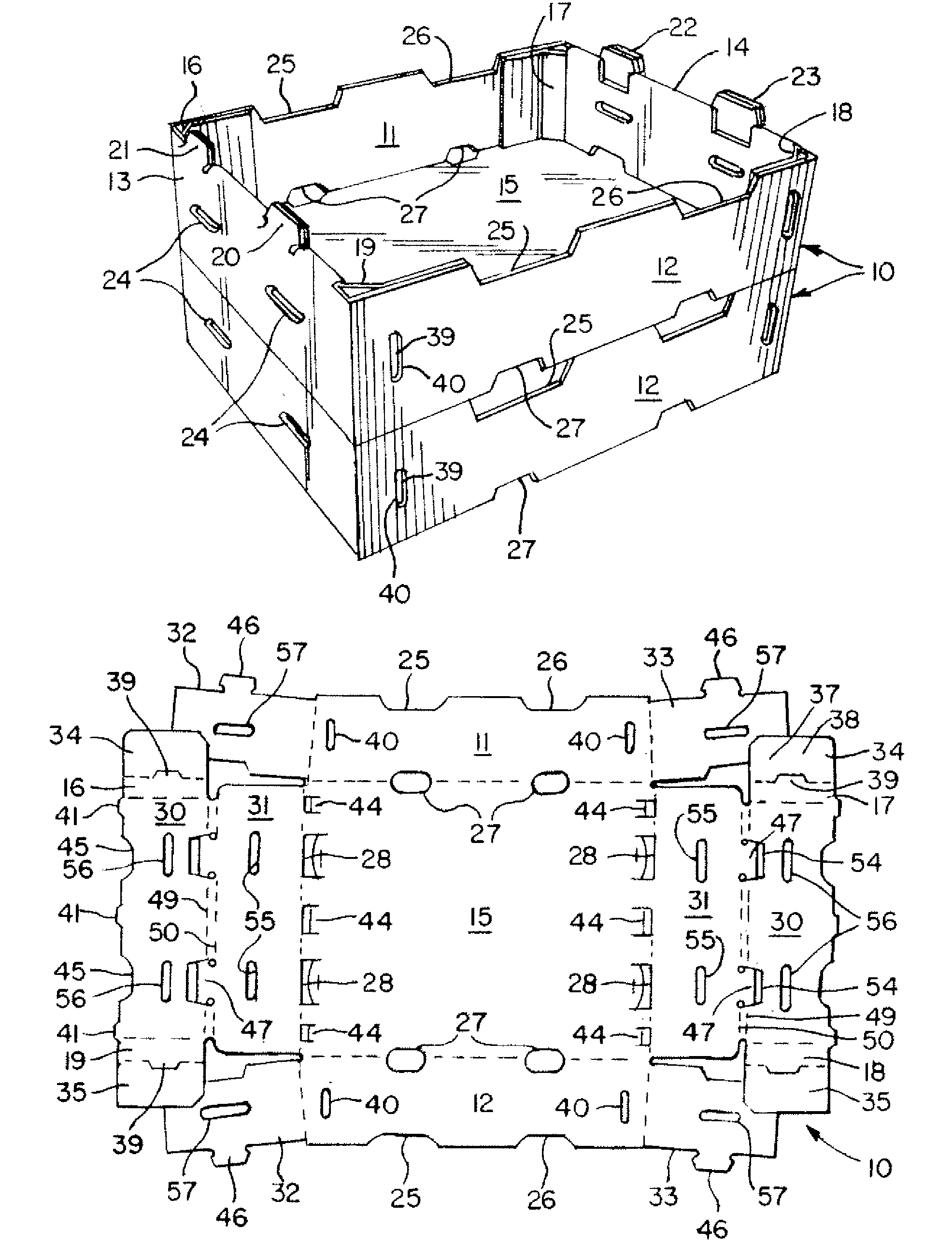Stackable paperboard container
a stackable container and paperboard technology, applied in the field of stackable containers, can solve the problems of consuming a substantial amount of material in its construction, the force of loading and stacked containers,
- Summary
- Abstract
- Description
- Claims
- Application Information
AI Technical Summary
Benefits of technology
Problems solved by technology
Method used
Image
Examples
second embodiment
[0054]the invention is indicated generally at 60 in FIGS. 13-18. This form of the invention is essentially the same as that previously described, including the inward inclination of the indexing walls, and like or similar components are identified with like reference characters primed. Therefore, a detailed description of all the components is not provided, since it is believed that the structure and function of the components of container 60 can readily be understood by reference to the drawings and comparison of the primed reference characters with those used in describing the previous embodiment.
[0055]The container 60 differs from that previously described primarily in that it has lid panels 61 and 62 that are folded inwardly over the top of the container from opposite sides to completely cover the top of the container. Further, ventilation openings 63 span the fold joining the lid panels to the side walls, and these ventilation openings extend into the lid panels and into the up...
third embodiment
[0058]the invention is indicated generally at 70 in FIGS. 19-21. This form of the invention is essentially the same as that shown in FIGS. 13-18, except that the lid panels 71 and 72 extend only part way across the top of the container when the lid panels are closed, and bendable flaps 73 on the ends of the lid panels fold down to lie against the outer surface of the end wall when the lid panels are closed. A shaped cut 74 at the fold 75 joining the respective flaps 73 to an associated lid panel defines a reversely extending heel tab 76 that projects upwardly from each flap to lie against an outer surface of an adjacent stacking tab 20″-23″. In addition, a cut-out 77 spans the fold between the inner and outer roll-over panels 30″, 31″ to form a recessed ventilation opening 78 in the top edge of each end wall in an area lying between the confronting edges of the lid panels when they are in closed position. Further, the ventilation openings 24″ in the end walls are circular in shape r...
PUM
 Login to View More
Login to View More Abstract
Description
Claims
Application Information
 Login to View More
Login to View More - R&D
- Intellectual Property
- Life Sciences
- Materials
- Tech Scout
- Unparalleled Data Quality
- Higher Quality Content
- 60% Fewer Hallucinations
Browse by: Latest US Patents, China's latest patents, Technical Efficacy Thesaurus, Application Domain, Technology Topic, Popular Technical Reports.
© 2025 PatSnap. All rights reserved.Legal|Privacy policy|Modern Slavery Act Transparency Statement|Sitemap|About US| Contact US: help@patsnap.com



